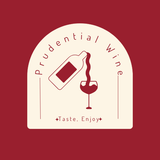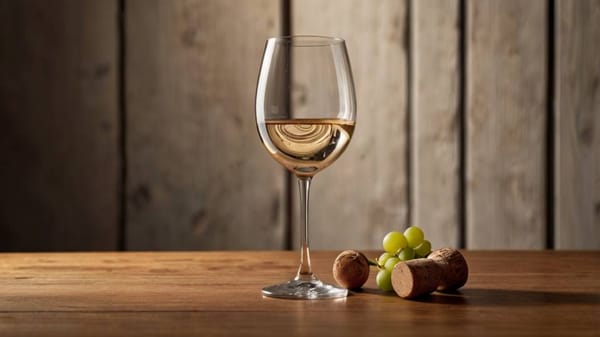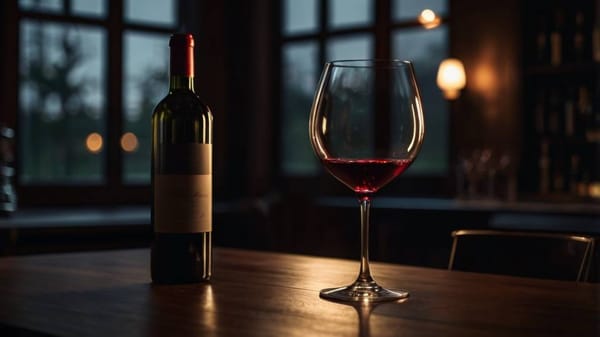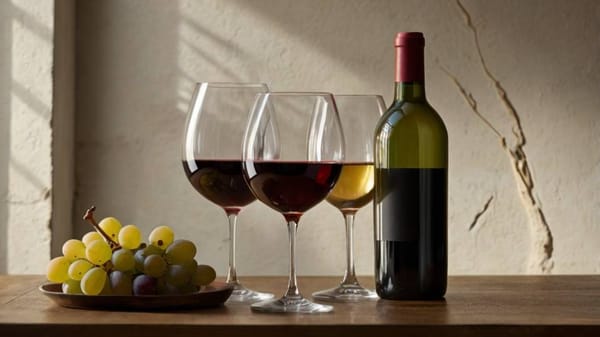The Ultimate 2-Bottle Combo for Any Meal
Skip the pairing stress. This smart two-bottle wine strategy helps you learn, taste, and enjoy with confidence—no chart or jargon required.
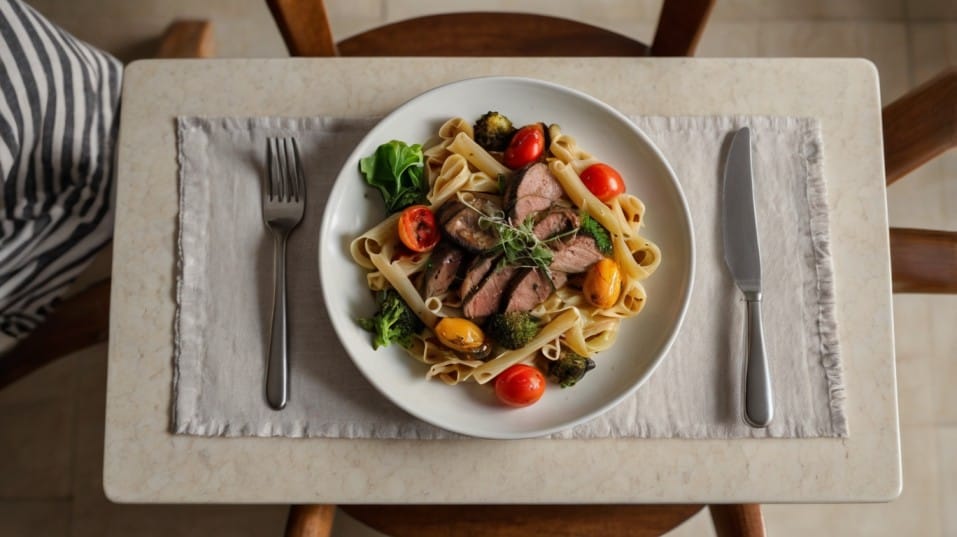
Ever feel stuck choosing just one wine for dinner? Here’s a better move: pick two. With the right red and white, you’ll cover nearly every dish on your table—no charts, no stress.
This two-bottle strategy sharpens your palate, simplifies pairing, and brings out the best in your meals.
If you're just getting into wine, this is the smartest, easiest way to taste with purpose and confidence—without needing a sommelier’s vocabulary.
Why Two Bottles Work Better Than One
Most wine advice starts by narrowing the focus: what pairs with this dish? But real-life meals are rarely that tidy. You might be serving spicy roast chicken with a citrusy salad.
Or ordering Thai takeout with five different sauces. Or cooking pasta with a creamy sauce and grilled vegetables. One dish rarely tells the whole story—and one bottle often can’t keep up.
The two-bottle approach flips the script. You’re not chasing a perfect match; you’re giving yourself a flexible set of tools. A red that brings lift and depth.
A white that offers freshness and shape. Together, they give you coverage. They give you freedom.
This isn’t about having “one light, one heavy.” It’s about selecting two wines that speak to a broader range of flavors and textures.
When you get the balance right, you unlock the real joy of wine: contrast, discovery, and the ability to meet a dish where it is—not where a pairing chart tells you it should be.
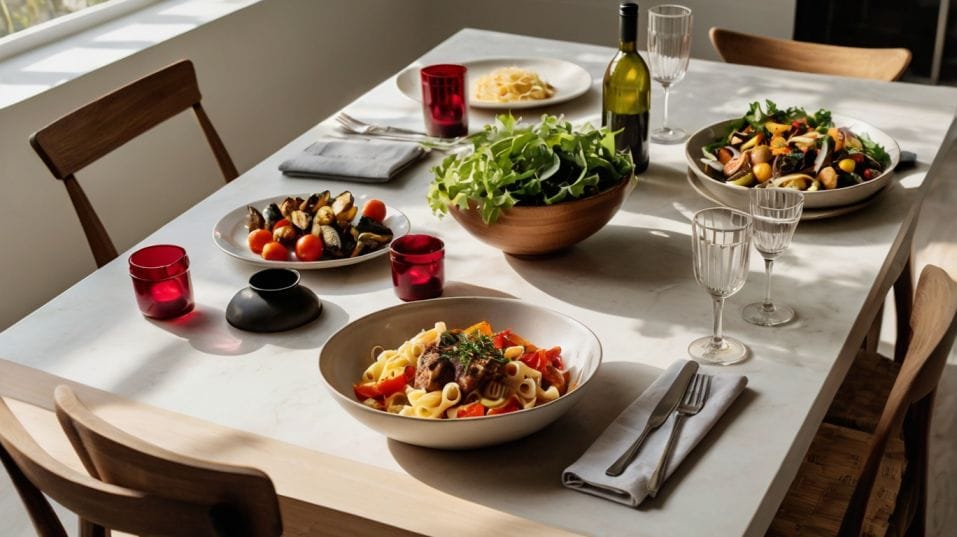
How to Choose Your Combo
Choosing the right two bottles isn't about chasing exotic grapes or memorizing flavor wheels.
It’s about knowing what qualities make a wine adaptable—how it behaves with food, how it evolves in the glass, and how it balances the meal rather than dominating it.
You want one red and one white that each bring range, structure, and character.
Start With the Red
You're looking for a red wine with structure and clarity. That means good acidity, moderate alcohol, and tannins that are present but not overpowering.
These qualities keep the wine agile with food—they prevent it from feeling flat next to rich dishes or harsh against lighter ones.
Avoid the extremes. Ultra-ripe, heavily oaked reds can drown out your meal. Overly delicate reds might fade too fast. The sweet spot lives in wines like:
- Pinot Noir – bright and earthy, with a natural lift that handles poultry, mushrooms, salmon, and soy-based dishes with ease.
- Gamay – juicy and aromatic, especially from Beaujolais, great with charcuterie, grain salads, or anything with herbs.
- Cabernet Franc – savory, leaner than its cousin Cabernet Sauvignon, with just enough edge to stand up to grilled vegetables, lamb, or tomato-based dishes.
- Grenache (or Garnacha) – soft tannins and warm fruit, especially good when lightly chilled and paired with roasted or spiced dishes.
Then Add the White
You want energy, but not just sharpness. Acidity is key, yes—but so is texture. A white that’s too lean might vanish next to anything creamy or deeply savory.
Go for wines that carry both freshness and weight—something with a tactile quality on the palate.
Look for:
- Grüner Veltliner – peppery, herbal, and excellent with tricky vegetables like asparagus or artichokes.
- Chenin Blanc – from dry to off-dry, it’s layered and complex, perfect with pork, seafood, or dishes with sweet-savory contrast.
- Dry Riesling – electric acidity and aromatic lift; ideal with spice, fatty fish, or fried foods.
- White Rhône blends (like Marsanne/Roussanne) – rounder, subtly floral, and able to pair with roasted chicken, creamy sauces, or grilled squash.
Notice something? These wines aren’t just safe picks—they’re wines that teach you something every time you pour them. They show you how acid, tannin, fruit, and texture all behave around food.
And because they’re not crowd-pleasers built for the lowest common denominator, they reward attention and repeat tasting.
Serving and Sipping With Intention
Pairing is more than a static choice—it’s a dynamic process. A wine that seems tight at first might open beautifully over the course of the meal.
A dish you thought would favor red might come alive with a splash of white. That’s why the two-bottle combo works so well. It gives you a live, interactive experience with flavor.
Simple Habits That Elevate the Experience
- Mind the temperature. Serve your red slightly cooler than room temp—around 55–60°F. This brings out acidity and keeps the alcohol in check. For whites, take them out of the fridge 15–20 minutes before pouring so their full texture can show.
- Taste alongside, not just after. Take a sip before the bite, and then again after. Notice what shifts. Does the wine get sharper, softer, sweeter? That’s the feedback loop that builds pairing instinct.
- Don’t rush the bottle. Wines change in the glass. A red may soften. A white may gain aroma. Let that evolution happen. Pour small, often, and pay attention.
This isn’t about being precious—it’s about being present. The more you stay attuned to how wine interacts with your food, the faster your palate grows. You’ll start trusting your senses more and relying on labels and reviews less.
Breaking Out of Rigid Pairing Rules
One of the biggest misconceptions in wine is that every dish demands its own pairing. In reality, what most meals need is a buffer—a wine (or two) that can pivot with flavor shifts, temperature changes, and personal preferences at the table.
Your two-bottle combo doesn’t need to match everything precisely. It needs to create a generous zone of compatibility. From there, let your palate lead.
Let’s say you’re serving a spread of grilled meat, marinated vegetables, and a tangy yogurt sauce. The red brings the char to life.
The white tames the heat and plays off the acidity. Maybe someone prefers the red with everything. Maybe you mix and match. Either way, the combo creates space for experimentation—and makes the whole meal more engaging.
Final Thoughts
If you're building your wine confidence, skip the encyclopedias and start with two great bottles. One red, one white.
Both chosen with structure, range, and food in mind. This combo doesn’t just get you through dinner—it teaches you how to taste smarter, serve with ease, and enjoy wine on your own terms.
So next time you’re planning a meal, don’t stress over finding the perfect match. Instead, reach for your two-bottle setup. Try something textured.
Taste something alive. Add contrast and curiosity to your table. Because when you drink with intention, two bottles aren’t a compromise—they’re the most complete expression of what wine can do.
